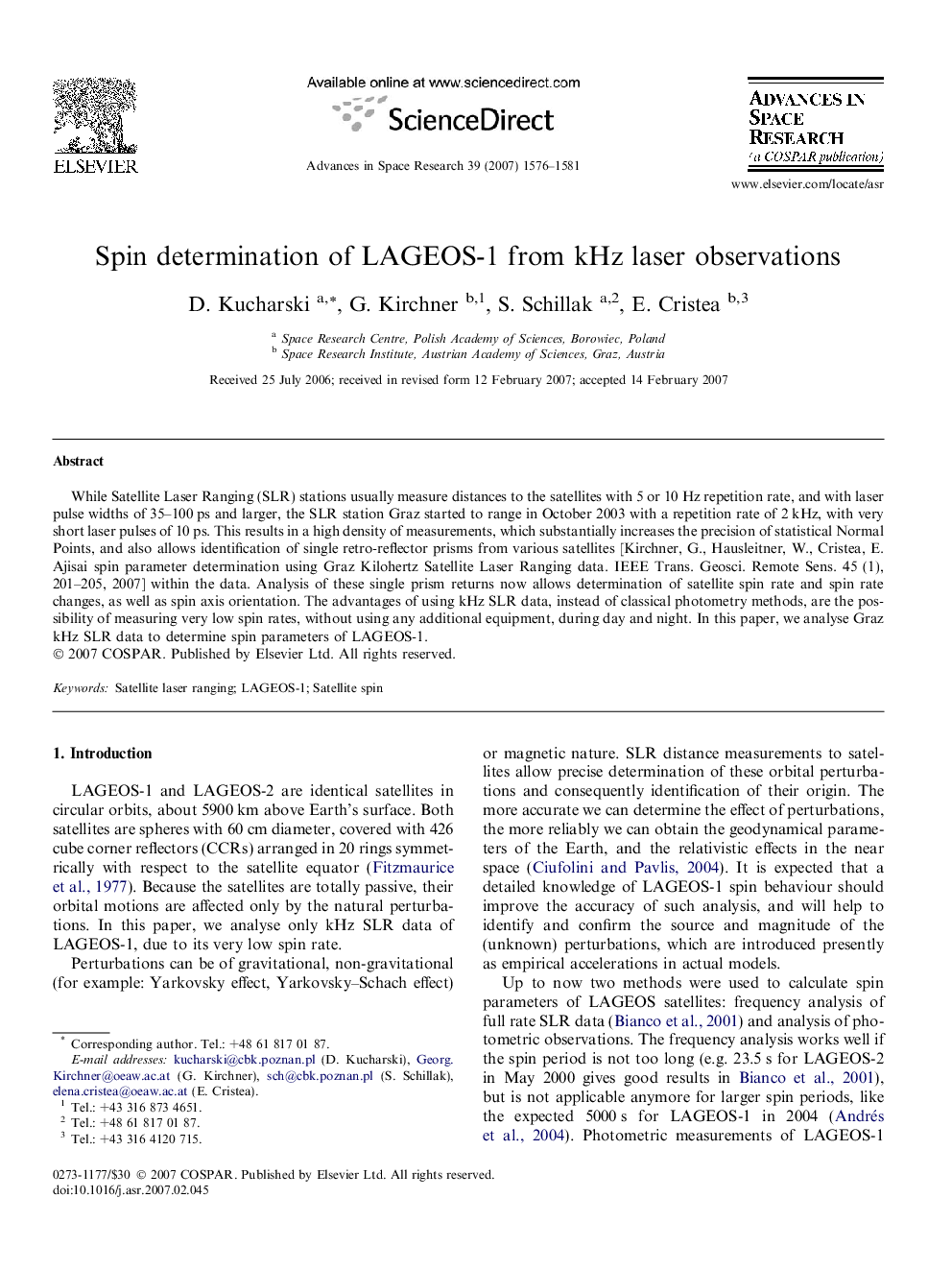| Article ID | Journal | Published Year | Pages | File Type |
|---|---|---|---|---|
| 1768899 | Advances in Space Research | 2007 | 6 Pages |
While Satellite Laser Ranging (SLR) stations usually measure distances to the satellites with 5 or 10 Hz repetition rate, and with laser pulse widths of 35–100 ps and larger, the SLR station Graz started to range in October 2003 with a repetition rate of 2 kHz, with very short laser pulses of 10 ps. This results in a high density of measurements, which substantially increases the precision of statistical Normal Points, and also allows identification of single retro-reflector prisms from various satellites (Kirchner et al., 2007) within the data. Analysis of these single prism returns now allows determination of satellite spin rate and spin rate changes, as well as spin axis orientation. The advantages of using kHz SLR data, instead of classical photometry methods, are the possibility of measuring very low spin rates, without using any additional equipment, during day and night. In this paper, we analyse Graz kHz SLR data to determine spin parameters of LAGEOS-1.
